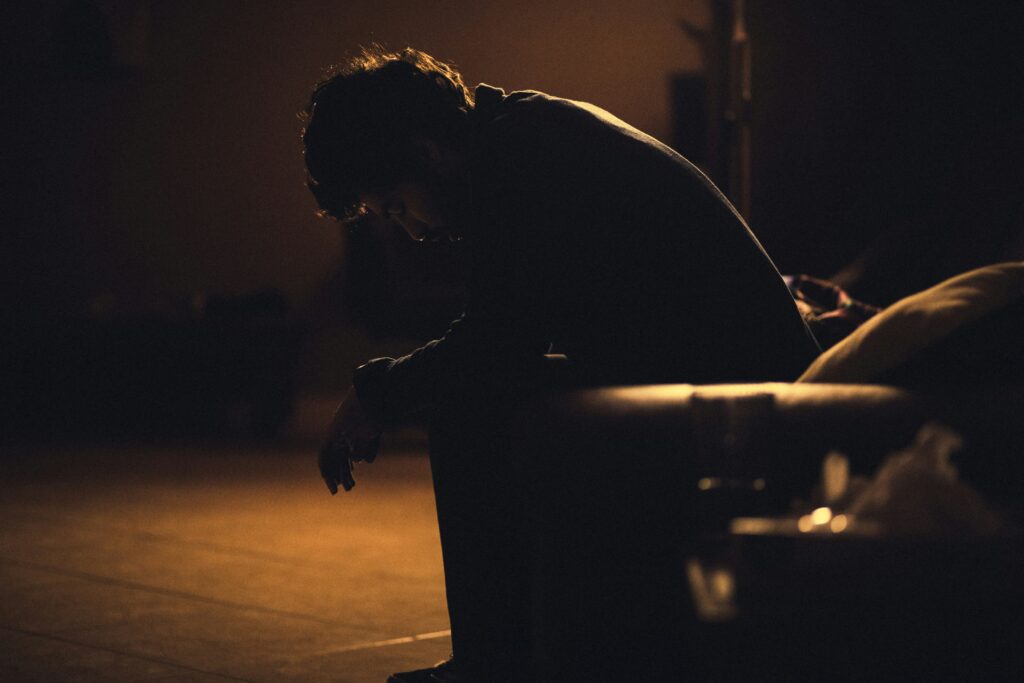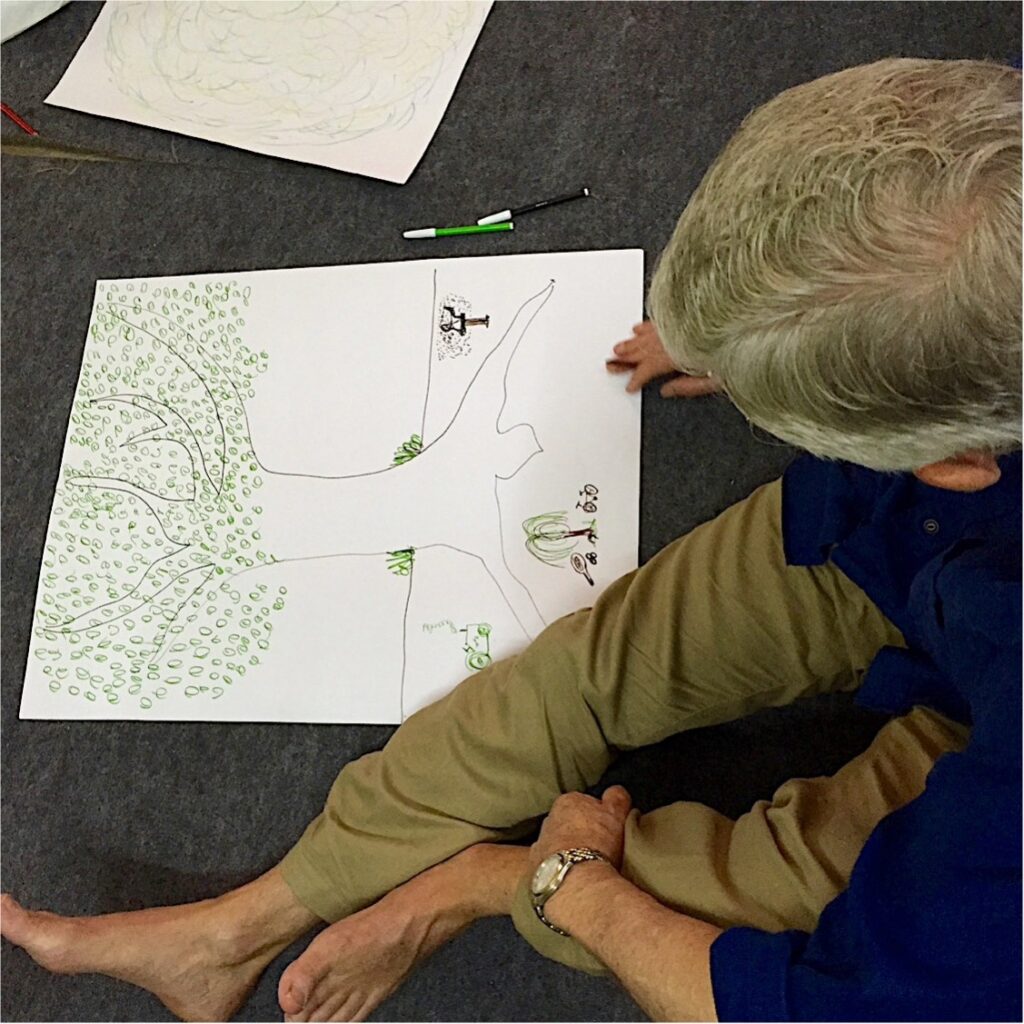By Dr Paula Davis
1 October 2025
“You keep track of all my sorrows. You have collected all my tears in your bottle. You have recorded each one in your book.” ~ Psalm 56:8 (NLT)
“Jesus wept.” ~ John 11:35
“The Christian life is not a constant high. I have my moments of deep discouragement. I have to go to God in prayer with tears in my eyes, and say, ‘O God, forgive me,’ or ‘Help me.’” ~ Billy Graham, Grace Life International

Photo by Gadiel Lazcano on Unsplash
I didn’t always trust tears. For a long time, I saw them as something to manage, or better yet, hide. They made me feel exposed, out of control, and somehow… weak. Especially in a world that often praises strength, composure, and “getting on with things.” But over time, I’ve come to see that tears can be holy. Not something to suppress, but something to listen to.
Because when tears finally come, those unexpected, soul-deep ones, they often carry truths we haven’t dared to speak. They rise from places we’ve buried and long forgotten. And in their tender flow, something begins to shift. Hardened ground softens. Defences falter. The heart begins to open.
This chapter is about those moments. The ones when pain finally breaks through the surface, not to destroy us, but to invite us toward healing. Toward honesty. Toward God.
Let me invite you into a reflection on my husband’s tears…
Reflections from Evans Head

For much of my adult life, I didn’t cry. It wasn’t that I didn’t want to, it’s just that I couldn’t. Somewhere along the way, I had learned to shut down emotions. Tears were seen as weakness, and weakness felt unsafe. I had become emotionally disconnected from myself, from God, and from others.
The turning point came years later, in a quiet moment with God. I don’t remember what triggered it, but I suddenly began to weep, deep, wrenching sobs that came from a place I hadn’t touched in years. It was as if a dam broke. And with it came healing.
Tears, I’ve come to believe, are not signs of failure. They’re signs of life.
I had spent so long protecting myself from pain that I also shut myself off from joy, connection, and love. I had become like that pike in the glass tank. Somewhere deep inside, I believed there was no safe place for my vulnerability. So, I learned to stay behind the glass.
But God is our safe place.
He doesn’t demand performance or perfection. He simply asks us to come. To let the defences fall. To bring our sorrow, shame, and longing to Him. In the Psalms, David writes, “You have collected all my tears in your bottle. You have recorded each one in your book” (Psalm 56:8). God sees. God knows. God remembers.
When I allowed myself to weep, I found Jesus weeping with me. Not rushing me to move on but staying present with my pain. His tenderness undid me. And it began to restore what had been lost.
Our world doesn’t often give men permission to cry. But Jesus does. He invites us into wholeness, not by demanding strength, but by welcoming weakness. I’m still learning. But I’ve discovered that tears are a gift. They water the dry places of the soul. They soften what has grown hard. They create space for new life to grow.
And in those tears, I have found Him.
A Quiet Moment of Reflection
The year begins, and Paula and I find ourselves in one of our favourite spots at Evans Head. The world is still, and the day’s quiet serenity provides a perfect backdrop for reflection. As the first cups of tea warm our hands and hearts, Paula reads selected excerpts from the feedback, “grabs,” as we call them, from the participants in our Trauma Recovery Program. Their words resonate deeply with me, drawing me into their experiences. As I watch the steam rise from my tea, I find myself suspended between the memories of their stories and the peace of the moment.
The Healing Power of Vulnerability
Communication has always fascinated me, especially the way meaning takes shape in the listener’s mind. I often wonder: what does my listener actually hear? The reflection diaries from our Trauma Recovery Program offer deep insights into this delicate exchange. Yet, one particular entry pulls me out of my reflective state.
This entry is different. It carries a raw honesty, a vulnerability that immediately draws me in. The young woman writes about an experience in the Tree of Life exercise, where participants were invited to connect with their pain in ways that bypassed logic and went straight to the heart. She speaks of her struggle with tears, tears that she feels she is not strong enough to shed. Her words echo in my mind, revealing the courage it takes to approach our deepest emotions, even when we fear what they might bring.
The Power of the Tree of Life Exercise

In the Tree of Life exercise, we help participants dismantle the protective walls they’ve built, allowing them to engage with their pain in a way that transcends logic. This young woman’s words take me back to that moment. I remember the stillness in the room as everyone faced their pain head-on. For her, this moment was marked by a fear of tears, a fear of what might happen if she let go. “I am not strong enough to cry,” she writes, her words trembling with vulnerability.
This powerful disclosure brings me face-to-face with my own assumptions. I’ve often viewed tears as a weakness, an idea I learned growing up in a home where crying was discouraged. My father, a Second World War veteran, never cried. Tears, to him, were a sign of weakness. Yet, as I sit with this young woman’s words, I realize that her struggle with tears is not about weakness, it is an invitation to confront pain and find healing.
Tears: A Sign of Strength, Not Weakness
Her words challenge a deeply ingrained belief I’ve carried for years. Tears have always been a source of discomfort for me. Growing up in a family where vulnerability was suppressed, I’ve often felt that crying was something to hide, something that revealed my lack of strength. Yet, as I read her reflection, I begin to see tears for what they truly are: a release, a surrender, and often, the beginning of transformation. This young woman’s courage to face her fear of tears shifts my perspective. I now understand that tears are not a sign of weakness but a profound expression of strength, a willingness to face pain and begin the journey of healing.
A Conversation That Opens New Doors
Later that morning, Paula and I engage in a conversation that opens new doors in our relationship. We’ve been wrestling with the patterns that emerge when we’re under pressure, especially after workshops. I confess that I’ve been struggling to feel connected, sensing a withdrawal from Paula. But as we talk, I begin to see that my own pattern is also at play. I tend to disconnect when Paula is struggling with something, like a migraine or stress. I’ve learned to retreat into myself, armour up, and manage the situation, but I realize now that this response is rooted in an old wound.
Exploring Trauma Responses in Relationship
Our conversation takes an unexpected turn as Paula shares insights from a book she’s reading, Trauma by Professor Gordon Turnbull (2012). We begin to trace the trauma responses that emerge in both of us. For me, disconnection is a way of protecting myself from the fear of being left alone with my pain. For Paula, it’s a way of coping with her own emotional responses. We realize that both of us have been retreating into self-protection, unable to offer each other the safety we long for.
Finding Safety in God and Each Other
This realization is both painful and eye-opening. Neither of us can be the safe place for the other when we need it most. Yet, I find comfort in my Heavenly Father, my true place of safety. In moments like this, I’m reminded that ministry and life are underpinned by inner strength (Ephesians 3:16), and when I neglect to replenish that strength, the consequences are real. I see that what’s happening between Paula and me mirrors the struggles of the people we serve. We’ve been given an invitation to explore our own trauma responses and struggles, finding healing in the brokenness.
The Paradox of Healing

Photo by Deneen L Treble: https://www.pexels.com/photo/closeup-photography-of-rice-grains-1058401/
In these moments of tension and struggle, I’m reminded of the paradoxes that often define our healing journeys. I think of Jesus, who uses paradox to invite us into deeper wisdom. He tells us that unless a grain of wheat falls to the ground and dies, it cannot bear fruit. True life is found not in holding on but in letting go. In the same way, I’m learning that healing often comes not through avoidance but through engaging with our pain, allowing it to transform us. The journey is messy, uncertain, and full of paradox, but it is also where growth and transformation begin.
Closing Thoughts
As we reflect on the themes of vulnerability, healing, and connection, it becomes clear that true transformation often emerges from the places we are most reluctant to go, our pain, our brokenness, and our fear. Tears, once seen as weakness, have proven to be a powerful doorway to deeper healing and intimacy, not only with God but with each other. In the quiet, raw moments where we allow ourselves to be vulnerable, God meets us, not with condemnation, but with the tender embrace of love and restoration.
Our journey is not about avoiding pain or striving for perfection, but about embracing the paradoxes of life: that in our brokenness, we find wholeness; in our vulnerability, we find strength; and in our tears, we find healing. It is through letting go that we begin to truly hold on to what is life-giving.
As I continue to learn, I’m reminded that healing is a process, one that doesn’t always follow a neat path. It can feel messy, uncertain, and at times, deeply uncomfortable. But even in those moments of discomfort, God is present, guiding us toward wholeness and offering us His peace. We are not called to perform or to hold it all together. We are called to come, just as we are, broken and beautiful, ready to be restored.
So, as we move forward in this journey together, let us remember that God is our safe place. He does not ask us to hide our pain or mask our vulnerability. Instead, He invites us to bring our whole selves, tears and all, into His presence, knowing that in doing so, we are being transformed from the inside out.
Healing is not the absence of pain, but the invitation to face it with courage, faith, and the assurance that we are never alone in the process. And in the end, it is in our willingness to embrace vulnerability, to sit with our pain, and to trust God’s healing touch that we truly experience the fullness of life.
And perhaps this is where the greatest invitation lies: in learning to love, not in spite of our wounds, but through them. Because love, real love, is born in the crucible of vulnerability. It’s easy to love when life is smooth, and our hearts are unscathed. But to love after betrayal, to open our hearts after they’ve been broken, to trust again after being let down, that is a different kind of courage. That is sacred ground.
As we step into the next blog, we’ll explore what it means to love God, ourselves, and others when our capacity to love has been shaped, and sometimes distorted, by the wounds we carry. How do we love when fear, shame, or self-protection rise up? How do we respond to Jesus’ call to love with all our heart, soul, mind, and strength when parts of us feel numb, guarded, or fragmented?
This next blog invites us deeper into the heart of transformation. Because love, the most important thing, is not just a feeling or a commandment. It is a journey of healing. It is the path by which we are restored.
Declarations
• I declare that vulnerability is not a weakness but a source of strength. • I am willing to face my pain and open the door to healing and transformation. • I am worthy of God’s love and acceptance. • I bring my whole self, brokenness and all, into His presence. • I trust that He will restore and renew me. • I declare that healing is a process. • I will embrace the messy, uncomfortable moments with faith. • I know that God is present with me every step of the way. • I declare that tears are not a sign of failure but a profound expression of life. • They are a release of what has been held too long and a pathway to deeper intimacy with God and others.
Prayer
Father God, thank You for being my safe place, my refuge. I come before You today, bringing all that I am, my brokenness, my fears, and my pain. I ask for Your healing touch upon my heart, that I may have the courage to be vulnerable with You and with others. Help me to see my tears not as weakness but as a sign of life, a release of what has been hidden too long. Teach me to trust You in the messy, uncomfortable spaces, knowing that You are always with me, guiding me towards healing. Thank You for Your grace and compassion, for not rushing me but staying with me in my sorrow. May I continue to grow in Your love and find strength in my surrender to You. In Jesus’ name, Amen.
Refection Questions
How have I viewed vulnerability in my own life? Do I see it as a weakness or a pathway to healing?
In what ways can I create space to confront and release the pain I’ve been holding onto?
What is one area where I feel disconnected, and how can I begin to reconnect with God or others in that space?
How have I seen God’s presence in my struggles, and how has He been my safe place?
When have I experienced a moment of transformation, and how did embracing my pain lead to healing?
Journal Prompt
Write or draw a short prayer or reflection: What part of my pain or vulnerability is God inviting me to bring into His healing presence today? Let your pen move without censoring. See what flows out.
About the Author

Dr. Paula Davis, a clinical counsellor , supervisor and educator with three advanced degrees, specialises in trauma counselling, and before she retired, was a senior lecturer in counselling, designing and delivering curricula. Her book, “Eating Water, Drinking Soup: Finding Nourishment in the Deepest Pain” is available on request. With her husband, she delivers marriage programs internationally. In 2021, they published “A Safe Place: A Marriage Enrichment Resource Manual” available on online bookstores. Paula has published articles in peer-reviewed journals and speaks at conferences and venues in Australia and internationally.

